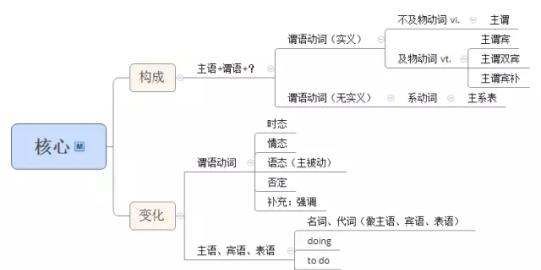本文目录
英语翻译
表语从句(Predicative Clause)就是用一个句子作为表语。说明主语是什么或者怎么样,由名词、形容词或相当于名词或形容词的词或短语充当,和连系动词一起构成谓语。
The problem is puzzling.
这个问题令人困惑。
主语+连系动词+形容词作表语
The problem is when we can get a pay rise.
问题是什么时候我们可以得到加薪。
主语+连系动词+句子作表语(表语从句)
表语从句一定要用陈述语序
if不能引导表语从句,只能用whether 来引导
什么是表语从句?(在英语当中)
跟在系动词后面的的句子。比如The reason is that he is clever.that he is clever 就是表语从句
英语中什么叫表语从句
表语从句
一
定义:
A
表语从句就是用一个句子作为表语。
The
problem
is
puzzling.
主语
连系动词
形容词作表语
The
problem
is
when
we
can
get
a
pay
rise.
主语
连系动词
一个句子作表语---表语从句
B
连接表语从句的连接词有:that,
what,
who,
when,
where,
which,
why,
whether,how.
He
has
become
a
teacher.
He
has
become
what
he
wanted
to
be
ten
years
ago.
She
has
remained
there
for
an
hour.
She
has
remained
where
I
stood
yesterday
for
an
hour.
His
suggestion
is
good.
His
suggestion
is
that
we
should
stay
calm.
The
question
is
confusing.
The
question
is
when
he
can
arrive
at
the
hotel.
who
will
travel
with
me
to
Beijing
tomorrow.
why
he
cried
yesterday.
how
I
can
persuade
her
to
join
us
in
the
party.
whether
the
enemy
is
marching
towards
us.
二
注意:
A
表语从句一定要用陈述语序。
False:
The
question
is
when
can
he
arrive
at
the
hotel.
Right:
The
question
is
when
he
can
arrive
at
the
hotel.
B
不可以用if,而用whether
连接表语从句(as
if
例外)。
False:
The
question
is
if
the
enemy
is
marching
towards
us.
Right:
The
question
is
whether
the
enemy
is
marching
towards
us.
Right:
It
looked
as
if
he
had
understood
this
question.
C
不像宾语从句,在有表语从句的复合句中,主句时态和从句时态可以不一致。
Right:
The
question
is
who
will
travel
with
me
to
Beijing
tomorrow.
Right:
The
question
is
why
he
cried
yesterday.
D
that在表语从句中不可以省掉。
表语从句只能置于主句之后,而主句的动词只能是联系动词。
句式:
联系动词
+
表语从句
1-
由连词
dass,
als
ob,
als
wenn
带起的表语从句
Meine
Absicht
war,
dass
ich
euch
eingehend
von
meiner
Reise
berichten
wollte.
我的意图是,持续不断地向你们报道我的旅行情况。
Der
Abschied
schien,
als
ob
man
ein
Herz
zerreisse.
这诀别情景,看着就像人的心都要碎了。
2-
由疑问代词或关系代词引起的表语从句
Er
will
werden,
was
sein
Bruder
ist.
他要像他哥哥那样。
Sie
ist
nicht
das,
was
sie
zu
sein
scheint.
她看起来不像她自己。
Er
war
es,
der
mir
immer
geholfen
hatte.
他就是经常帮我的那个人。
3-
比较下面的句子,用不定式来代替表语从句:
Sein
Wunsch
ist,
Lehrer
zu
werden.
英语中各种成分的英文名称
1、句式
从句clause
从属句 subordinate clause
并列句 coordinate clause
名词从句 nominal clause
定语从句 attributive clause
状语从句adverbial clause
宾语从句 object clause
主语从句 subject lause
同位语从句appositive clause
时间状语从句 adverbial clause of time
地点状语从句 adverbial clause of place
方式状语从句 adverbial clause of manner
让步状语从句 adverbial clause of concession
原因状语从句 adverbial clause of cause
结果状语从句 adverbial clause of result
目的状语从句adverbial clause of purpose
条件状语从句 adverbial clause of condition
真实条件状语从句 adverbial clause of real condition
非真实条件状语从句 adverbial clause of unreal condition
含蓄条件句 adverbial clause of implied condition
错综条件句adverbial clause of mixed condition
句子 sentence
简单句simple sentence
并列句compound sentence
复合句 complex sentence
并列复合句 compound complex sentence
陈述句 declarative sentence
疑问句interrogative sentence
2、时态
时态tense
过去将来时past future tense
过去将来进行时 past future continuous tense
过去将来完成时 past future perfect tense
一般现在时 present simple tense
一般过去时past simple tense
一般将来时future simple tense
现在完成时 past perfect tense
过去完成时present perfect tense
将来完成时 future perfect tense
现在进行时 present continuous tense
过去进行时past continuous tense
将来进行时 future continuous tense
过去将来进行时 past future continuous tense
现在完成进行时 present perfect continuous tense
过去完成进行时 past perfect continuous tense

扩展资料
句型结构
句子按其结构可分为简单句、并列句和复合句。
1、简单句
基本形式:简单句的基本形式是由一个主语加一个谓语构成。其它各种句子形式都是由此句型发展而来,如五大基本句型:
(1)主语+谓语(s.+predicate)
这种句型简称为主谓结构,其谓语一般都是不及物动词,例:Things change.事物是变化的。Nobody went.没有人去。
(2)主语+系动词+表语(s.+link v.+predicative)
这种句型称为主系表结构,其实联系动词在形式上也是一种谓语动词,系动词与表语一起构成了复合谓语,例:Mr. Turner is an artist.特纳先生是位画家。
(3)主语+谓语+宾语(s.+predicate+o.)
这种句型可称为主谓宾结构,它的谓语一般多是及物动词,例:We never beat children.我们从来不打孩子。
(4)主语+谓语+间接宾语+直接宾语(s.+predicate+oi.+od.)
这种句型可称为主谓宾宾结构,其谓语应是可有双宾语的及物动词,两个宾语一个是间接宾语,一个是直接宾语,例:He gave the book to his sister.他把这本书给了他的妹妹。
(5)主语+谓语+宾语+宾语补足语(s.+predicate+o.+o.c.)
这种句型可简称为主谓宾补结构,其补语是宾语补语,与宾语一起即构成复合宾语,例:I found the book easy.我发现这本书不难。(形容词easy作补语)
注意:有时两个或更多的并列主语拥有一个共同的谓语,甚至并列有两个主语和两个谓语,这样的句子仍然是简单句,例:China and other countries in the east Asia are developing rapidly.
中国和东亚其它国家正在迅速地发展。(China and other countries并列主语)
2、It引导结构
It 既是代词又是引词。作代词时,它可做人称代词、指示代词、非人称代词,用于前指、非确指或习语中。作引词时,它本身无实义,只起先行引导的作用。
可作形式主语(it is + adj. + for/of sb. to do sth.)或形式宾语(it + adj. + to do sth.),真实的主语或宾语是不定式、动名词或名词从句,它们则放在后面。
It 也用于强调句结构。如想强调某个词或部分,可用it is (was) + 强调部分(主语、宾语或状语) + that(who)…的强调结构。本章要求了解代词it 和引词it 的各种用法,重点掌握it 用于前指或后指;引导词it 用于强调结构。
3、并列句
两个或两个以上的简单句用并列连词连在一起构成的句子,叫做并列句,其基本结构是“简单句+并列连词+简单句”。
并列连词有:and, but, or, so等。并列句是由两个或两个以上的简单句连接而成。并列句中的各简单句意义同等重要,相互之间没有从属关系,是平行并列的关系。它们之间用连词连结。
4、复合句
复杂句(Complex Sentence)由一个主句(Principal Clause)和一个或一个以上的从句(Subordinate Clause)构成。
主句是全句的主体,通常可以独立存在;从句则是一个句子成分,不能独立存在。
从句不能单独成句,但它也有主语部分和谓语部分,就像一个句子一样。所不同在于,从句须由一个关联词(connective)引导。
以上就是关于表语从句英语怎怎么说 ,英语翻译的全部内容,以及表语从句英语怎怎么说 的相关内容,希望能够帮到您。

